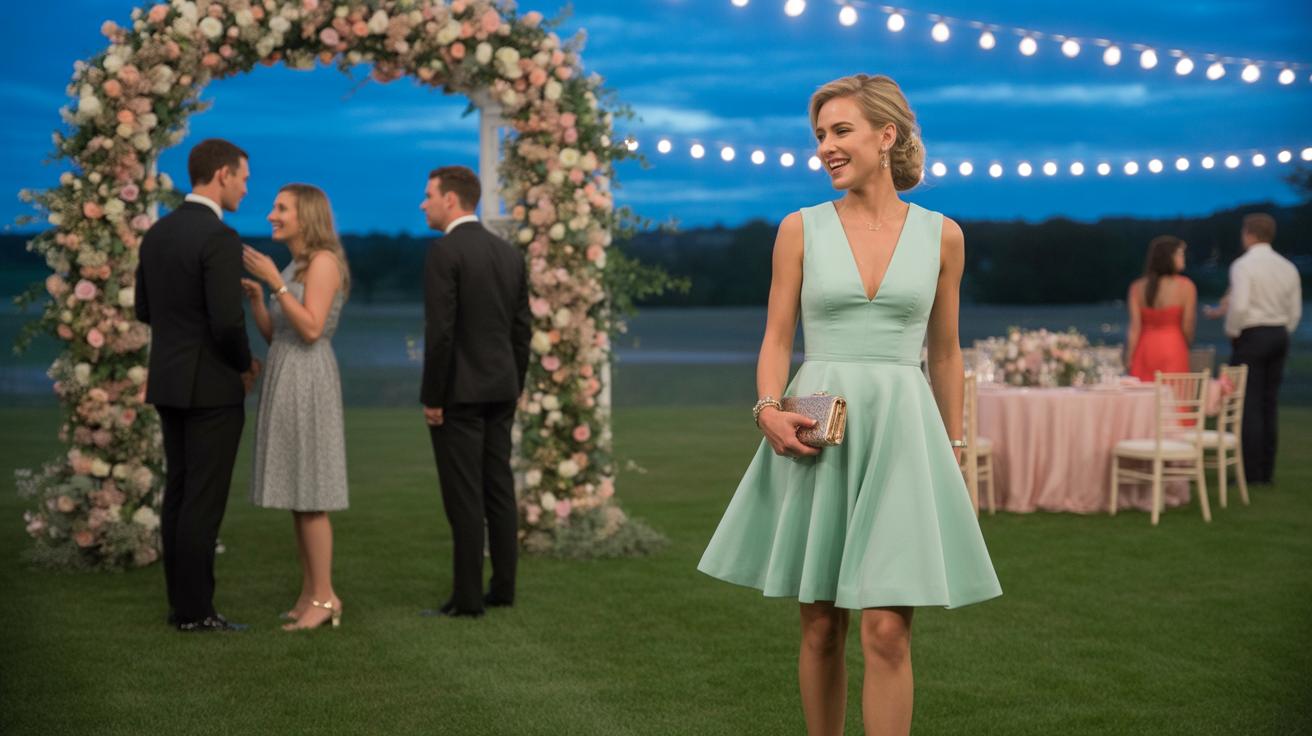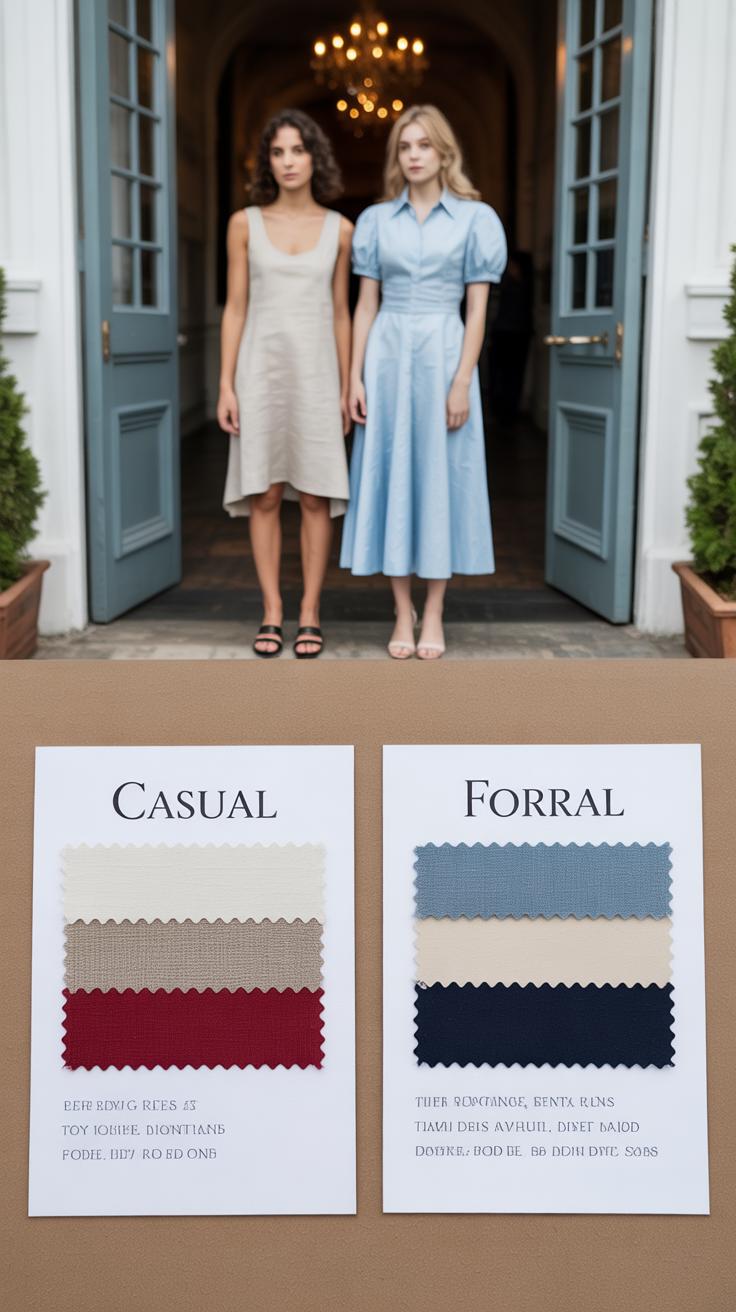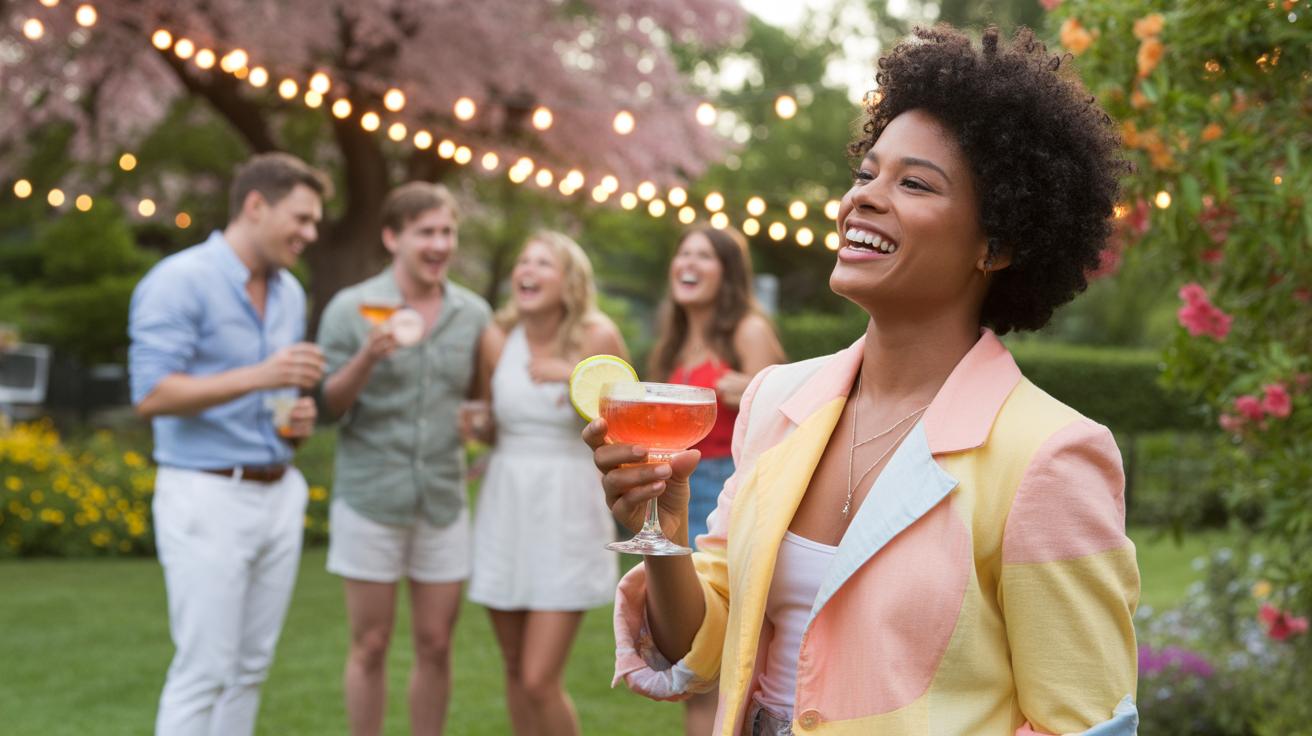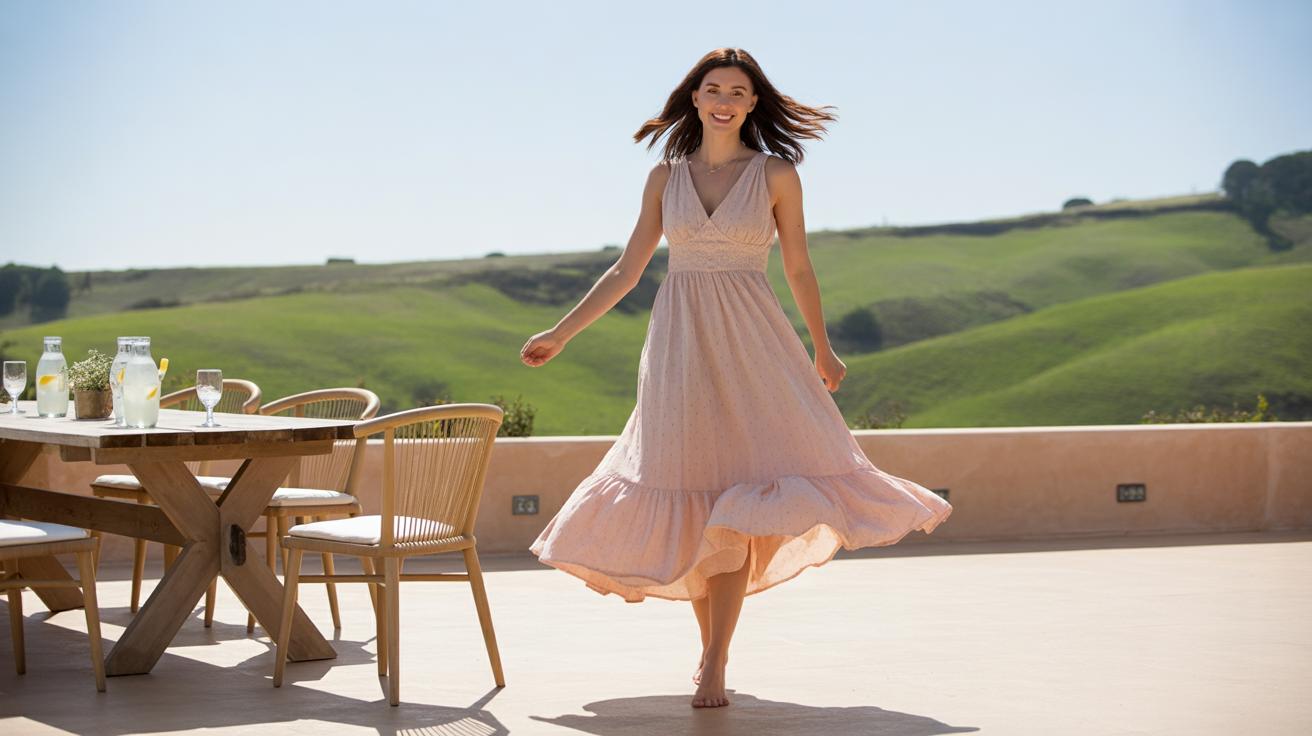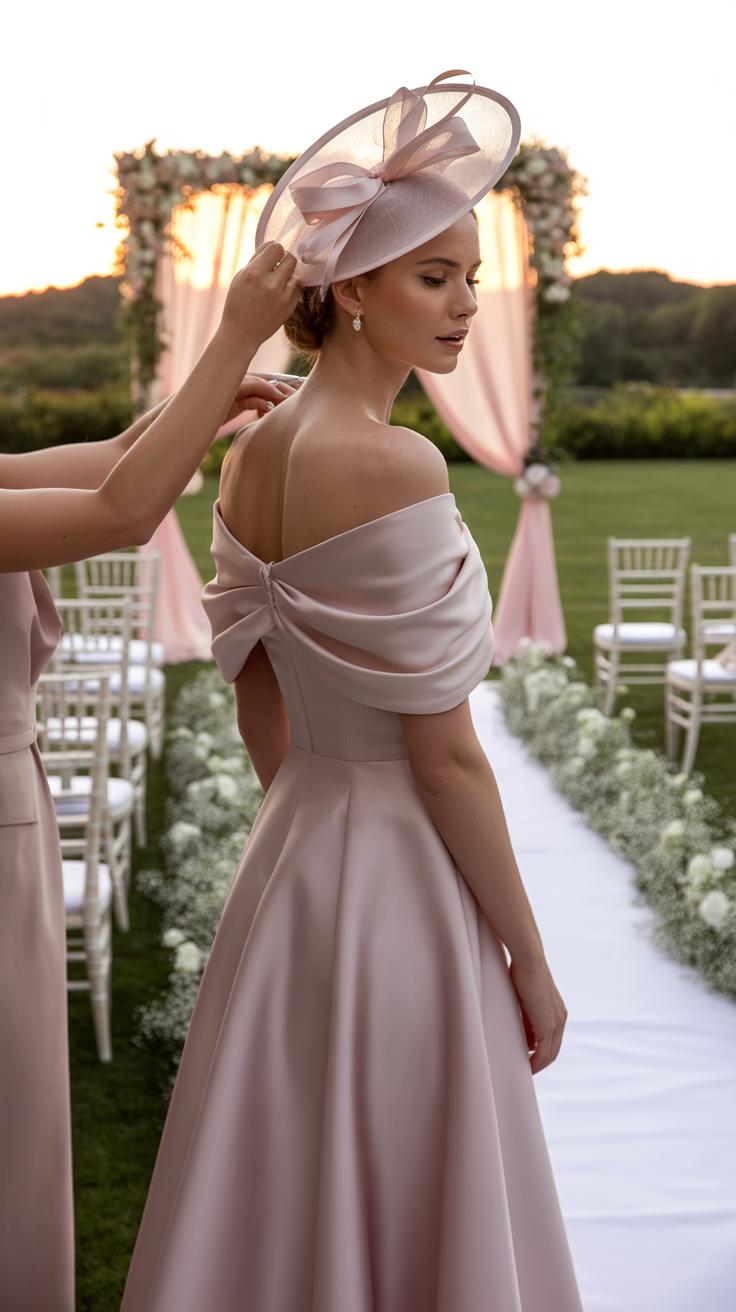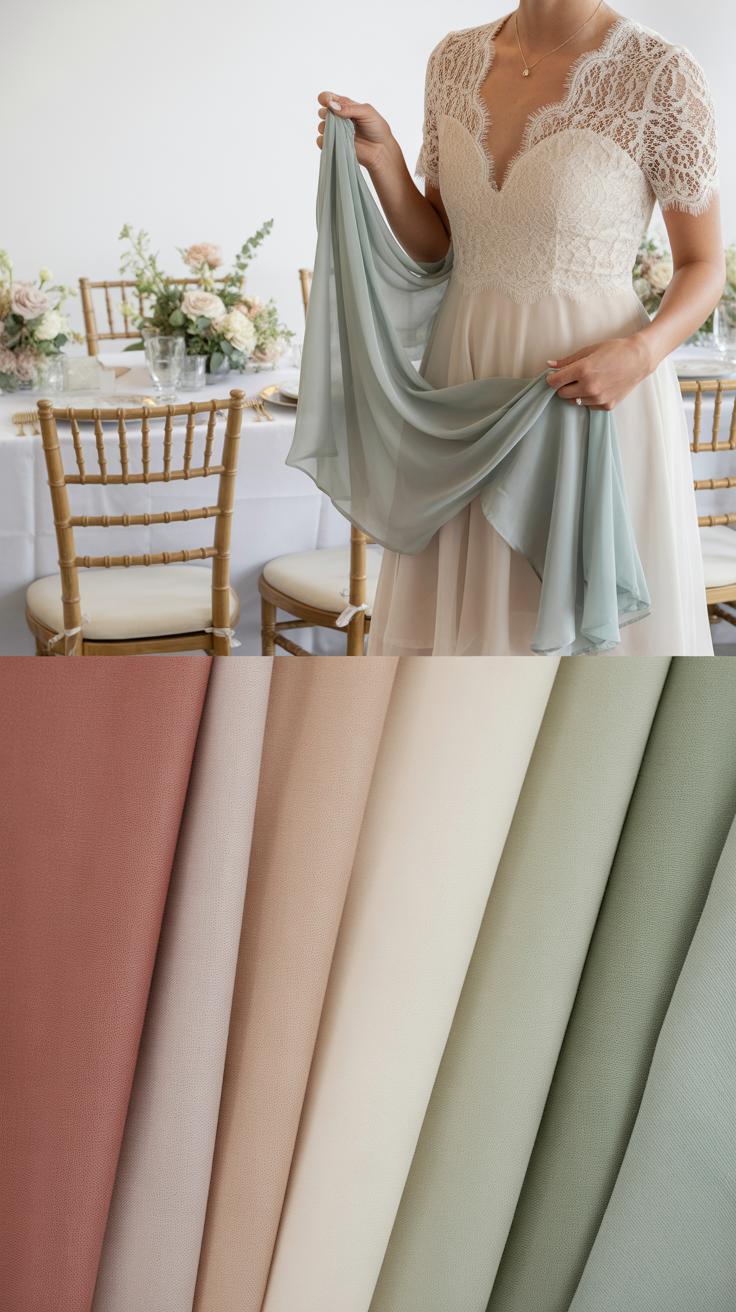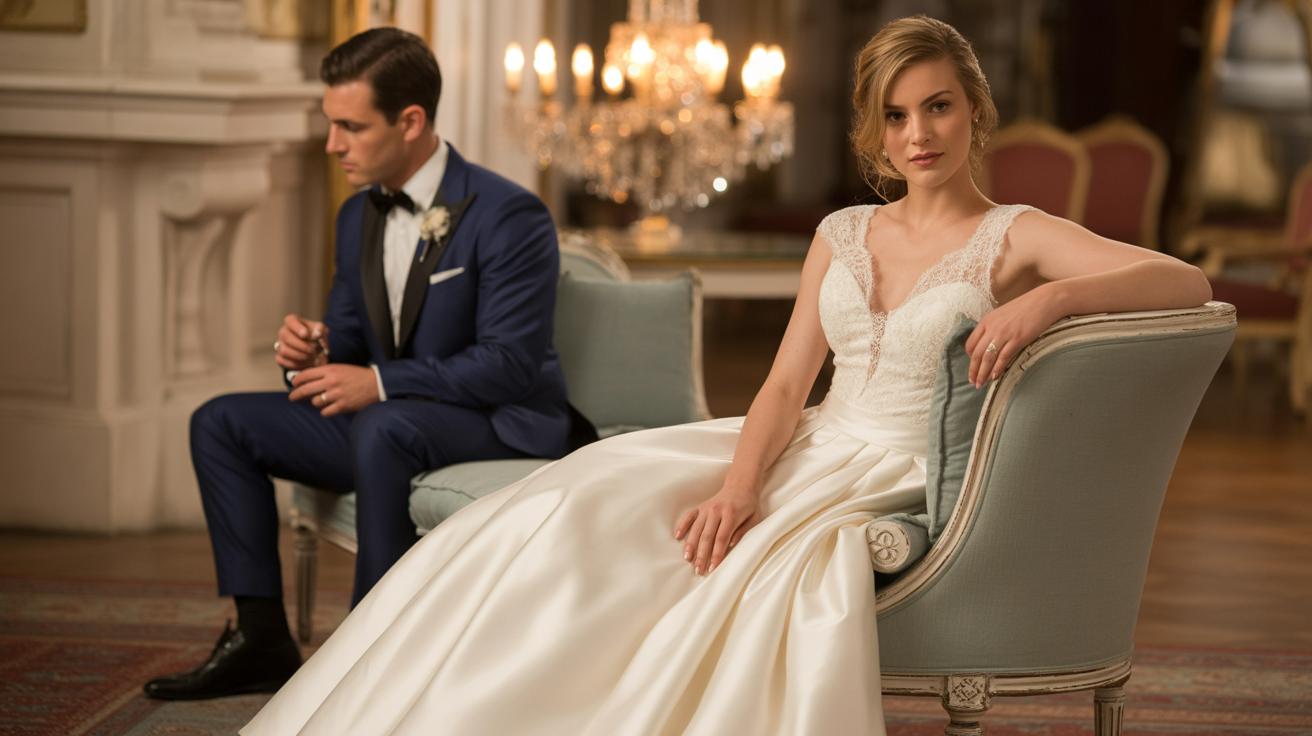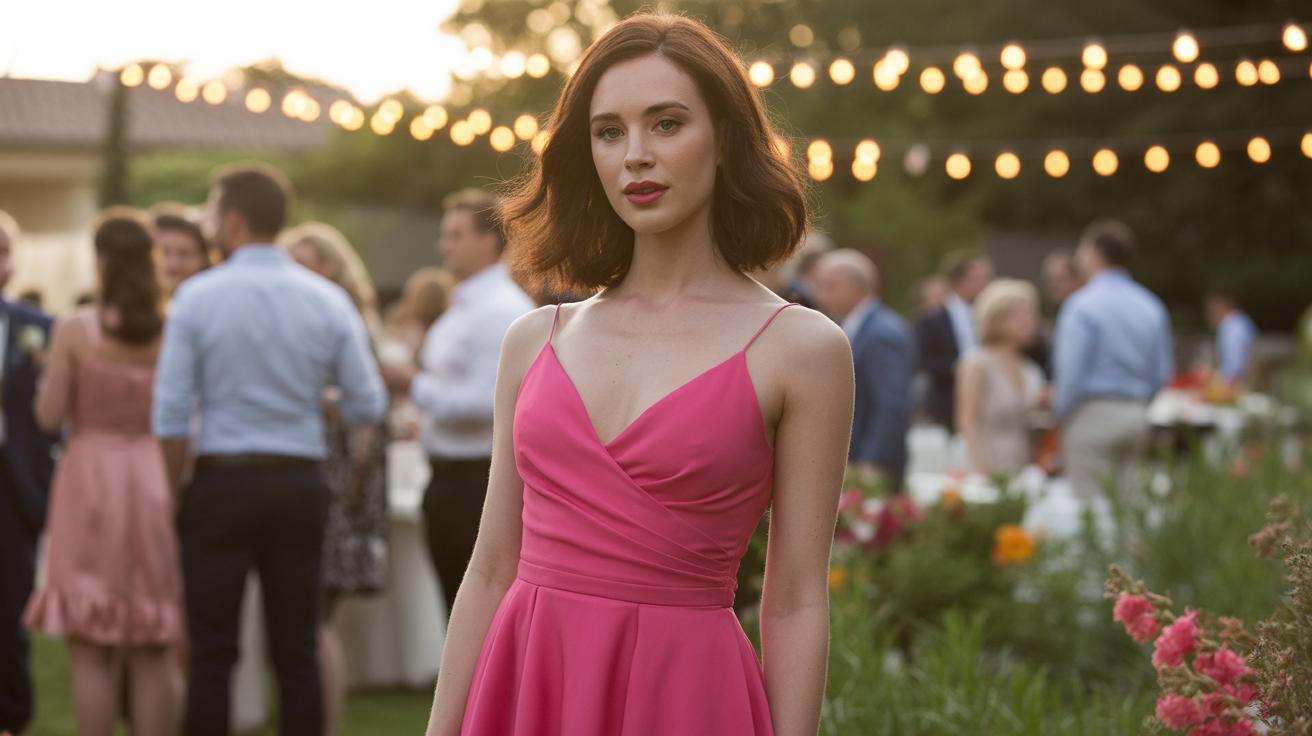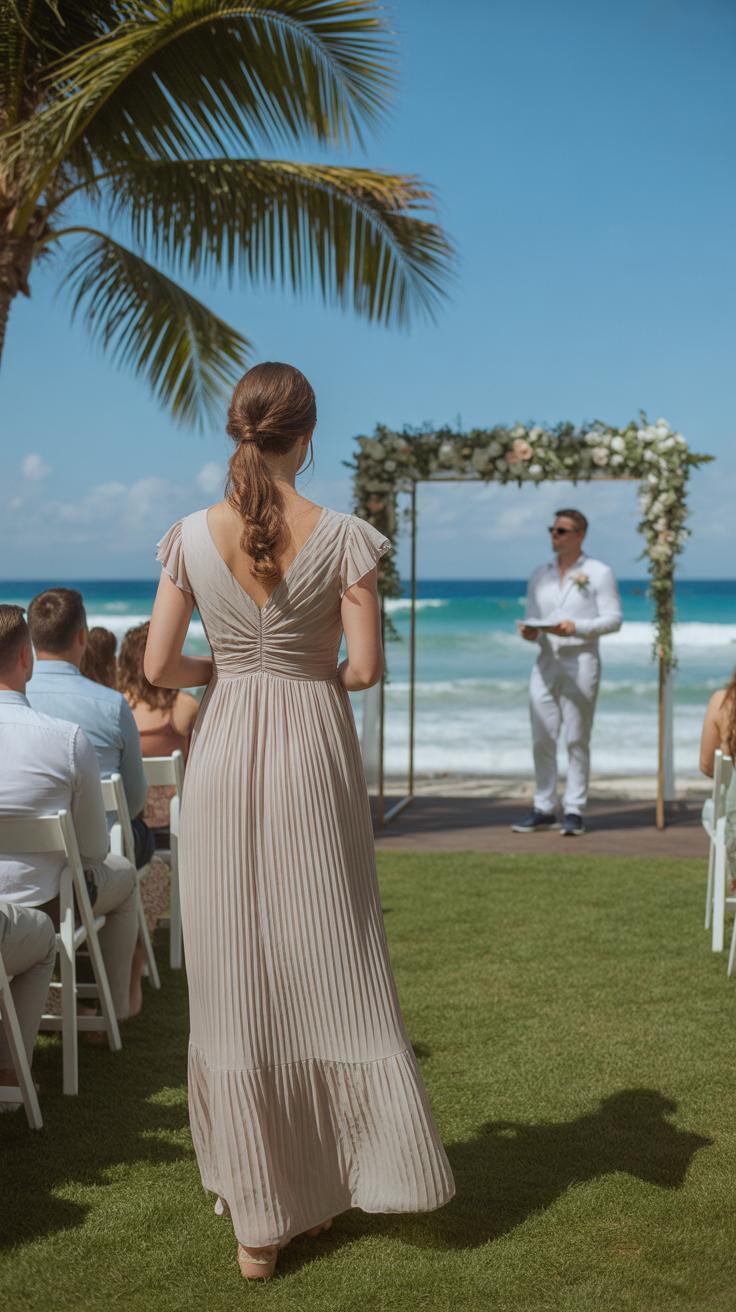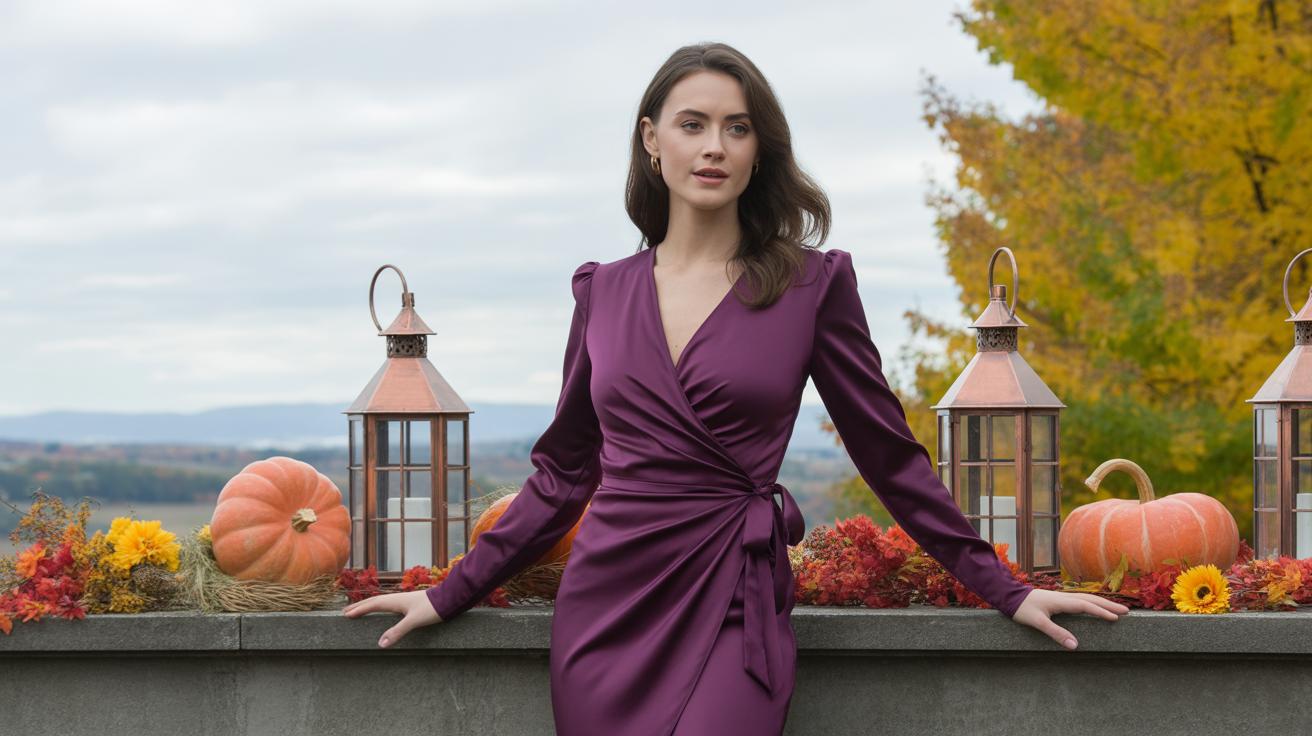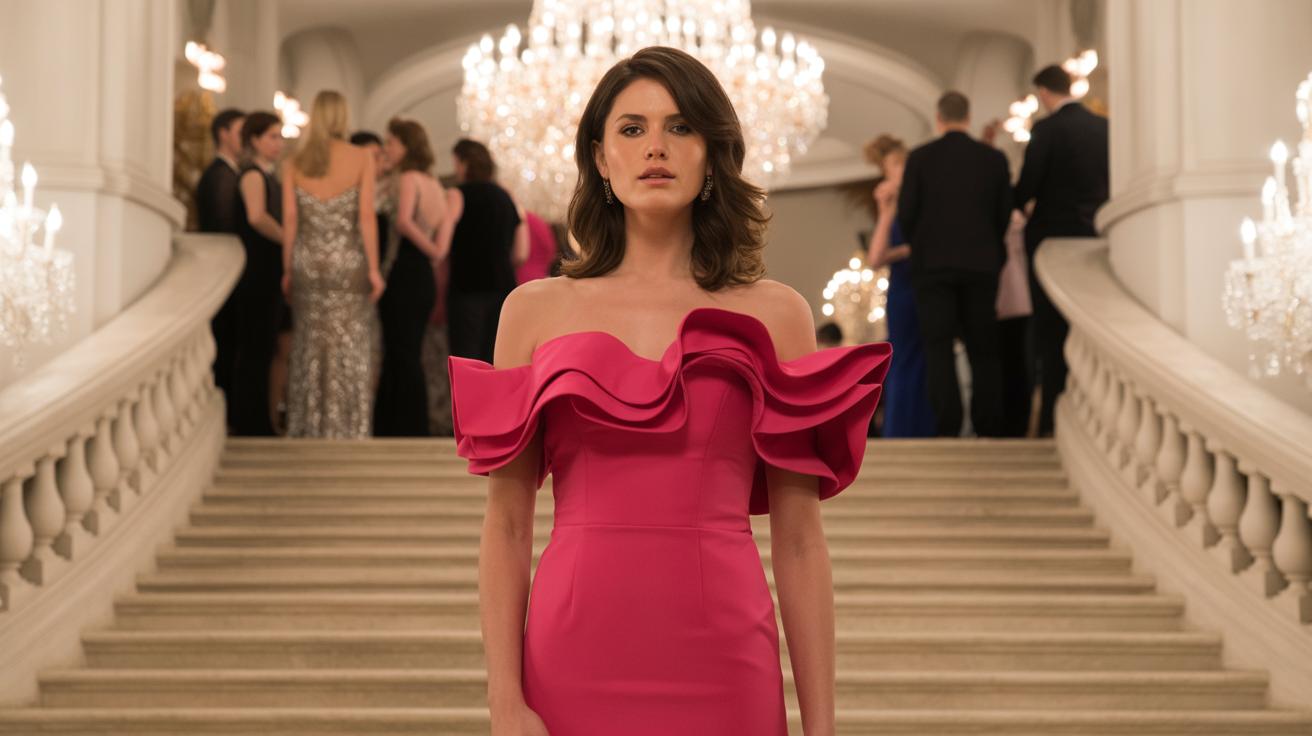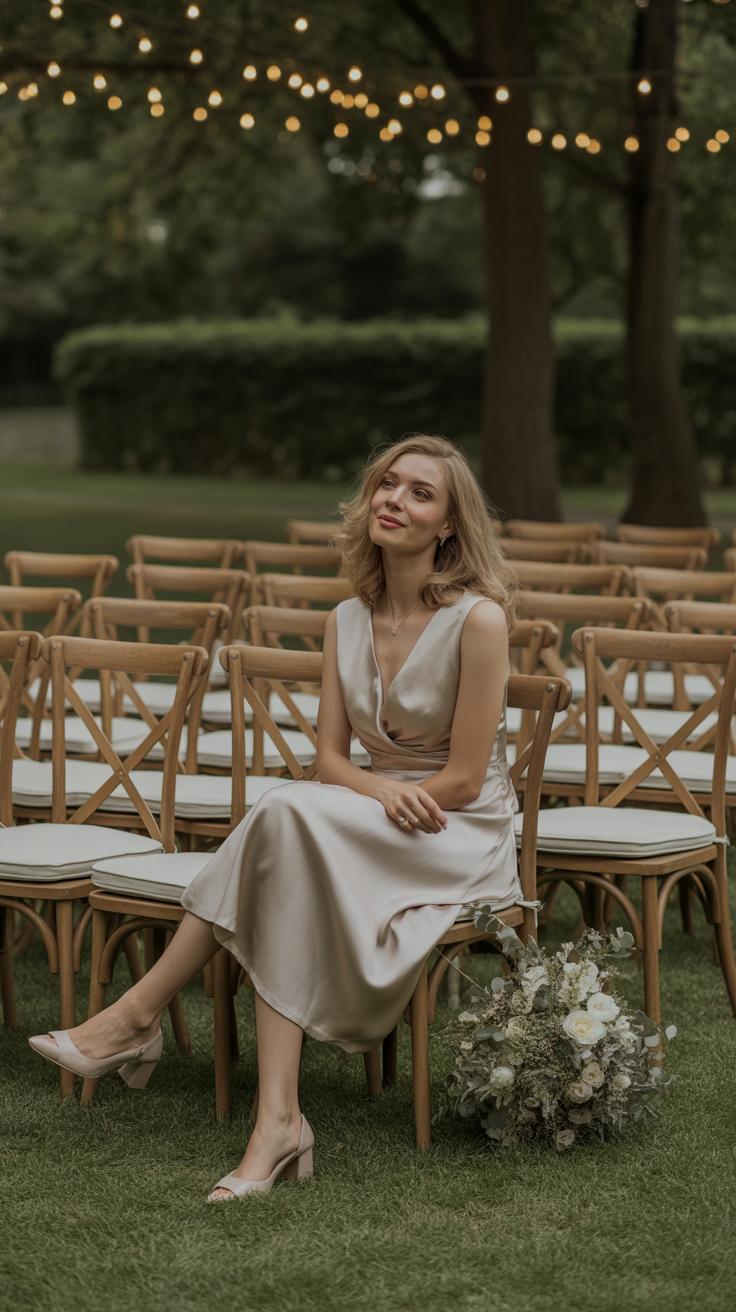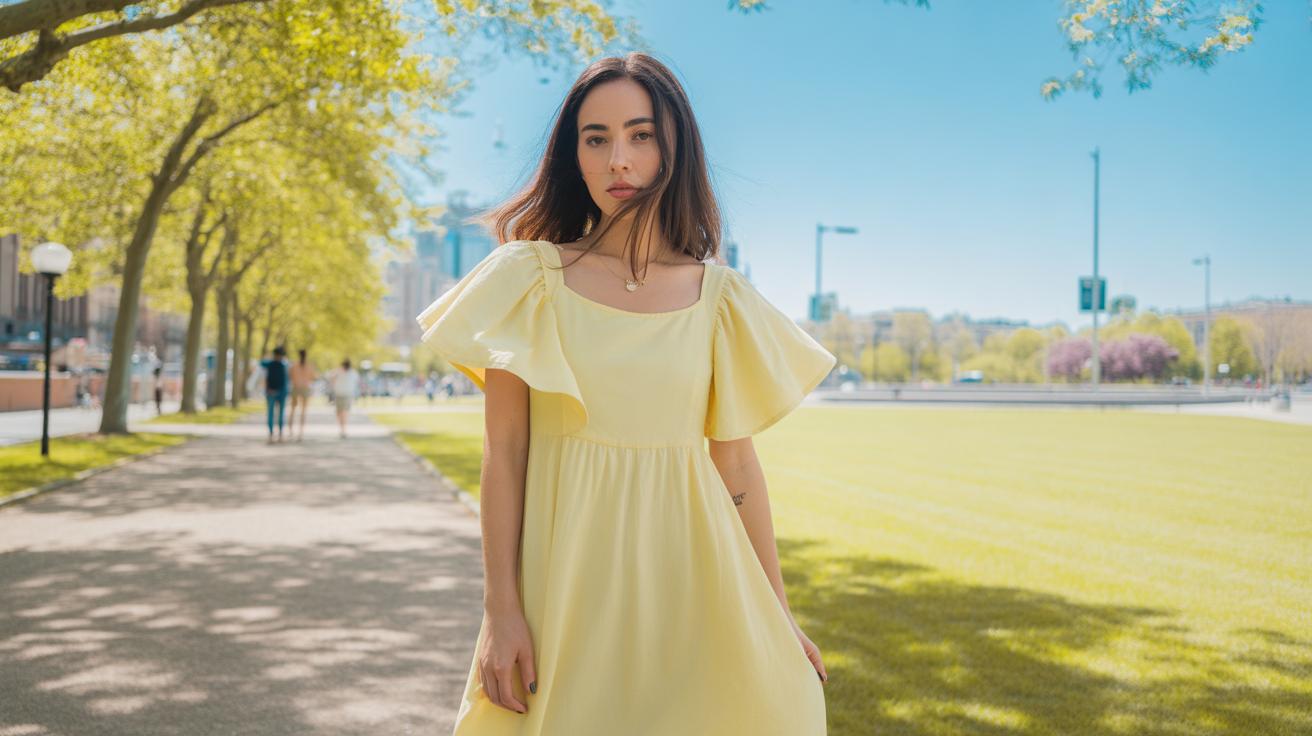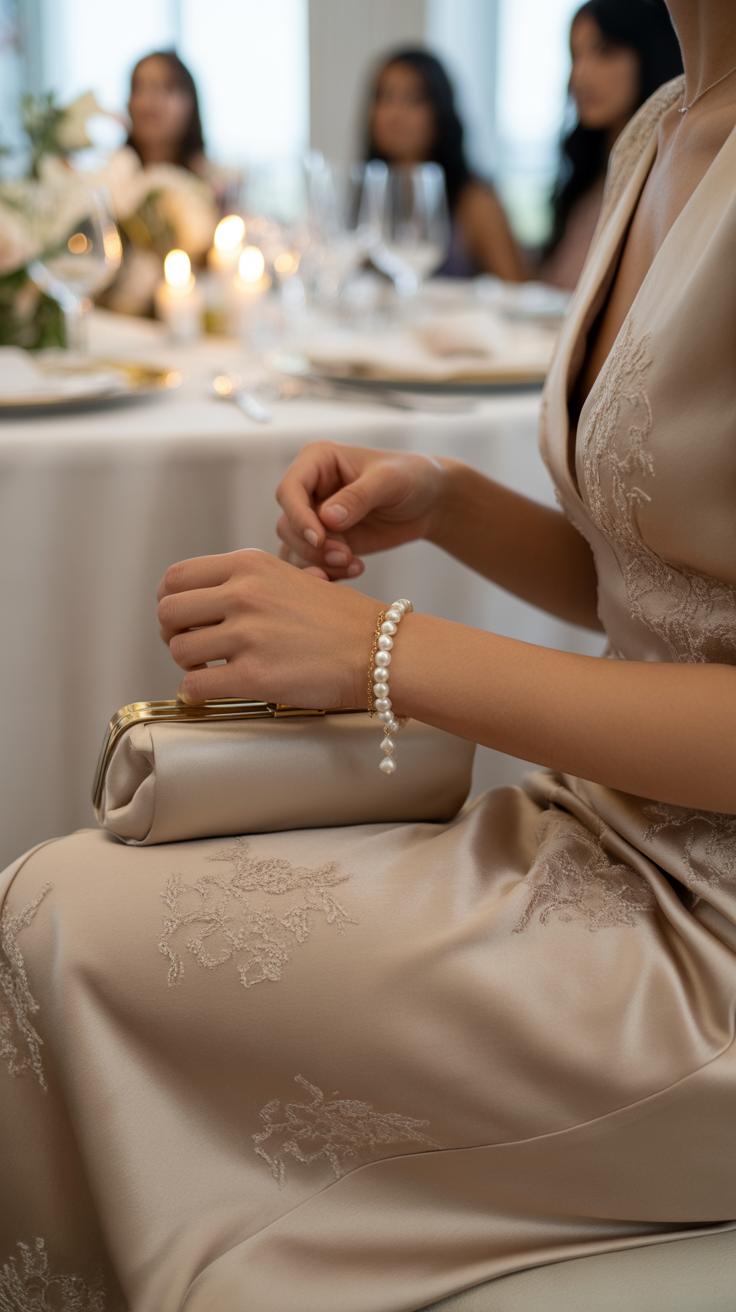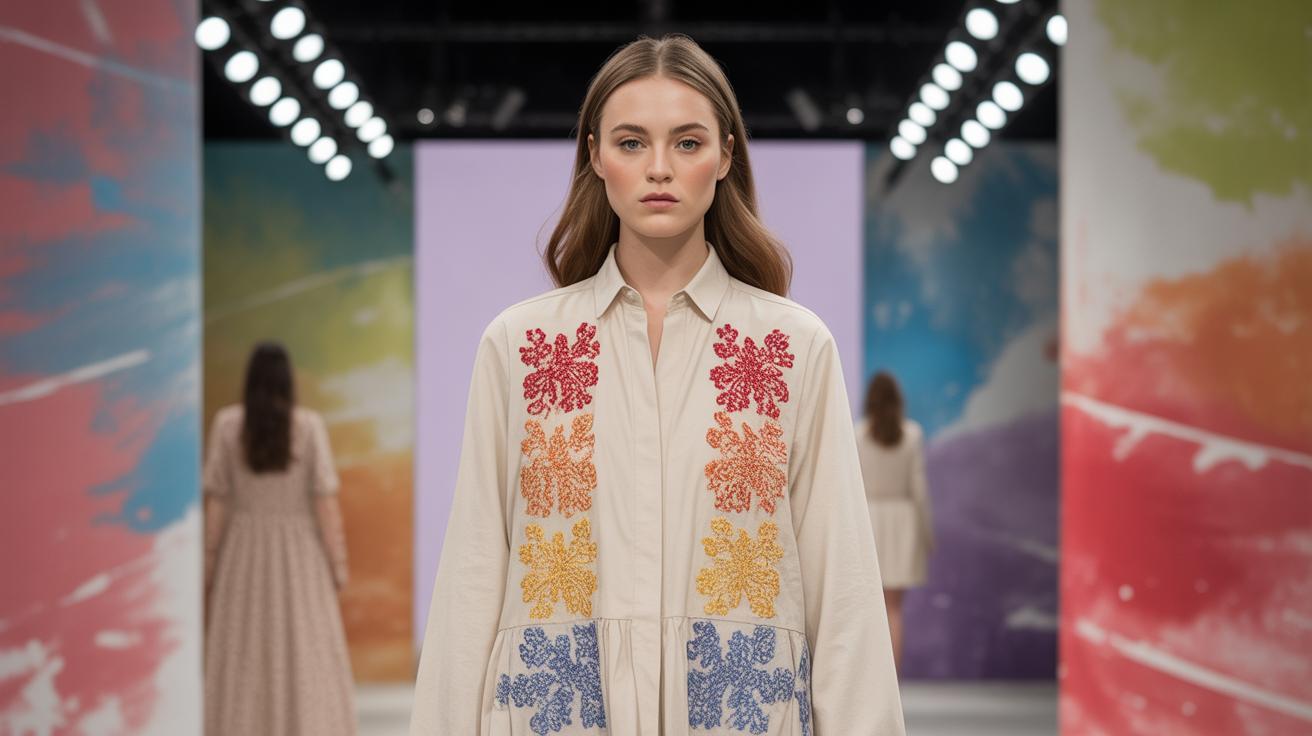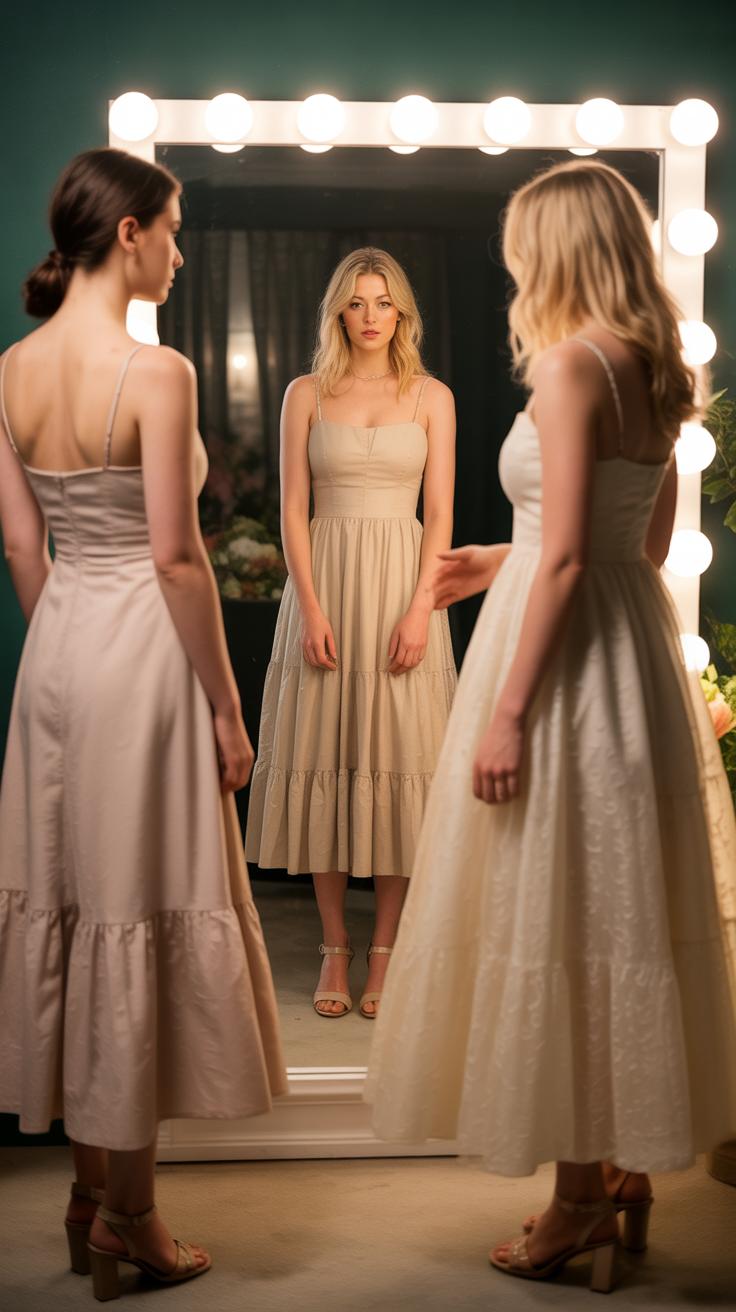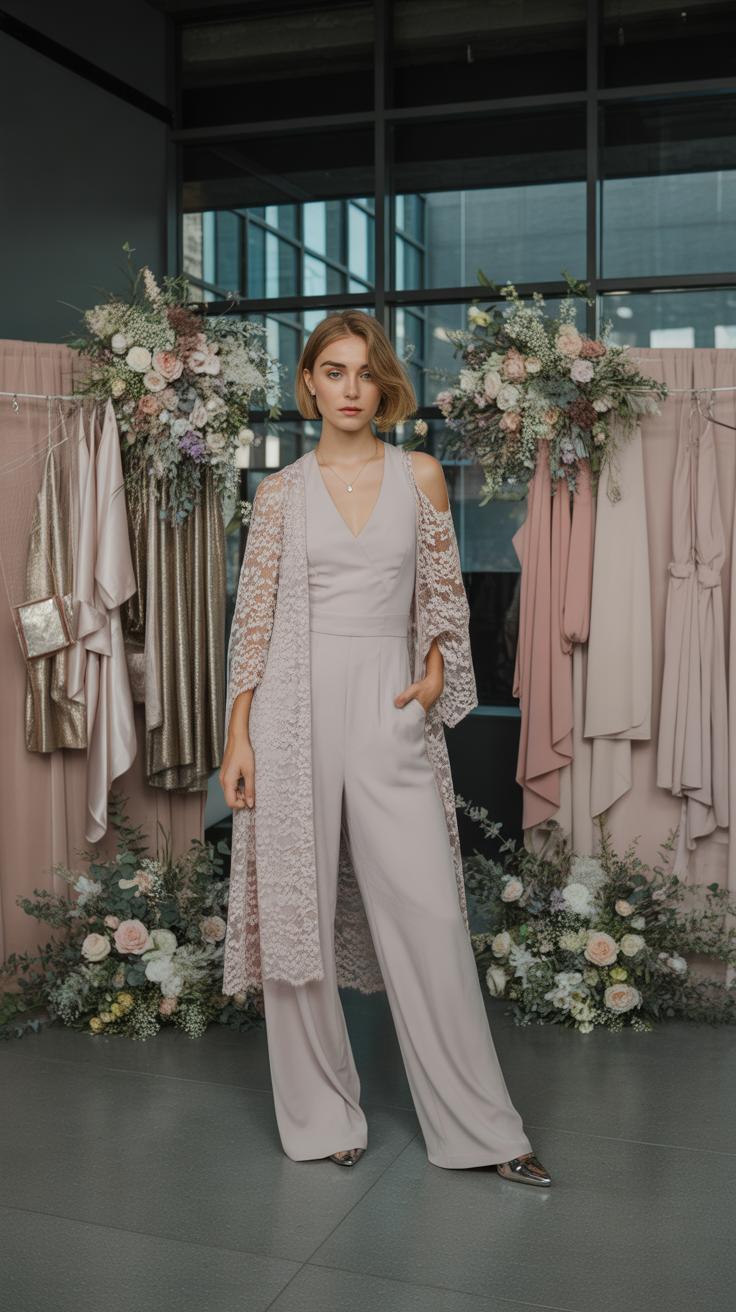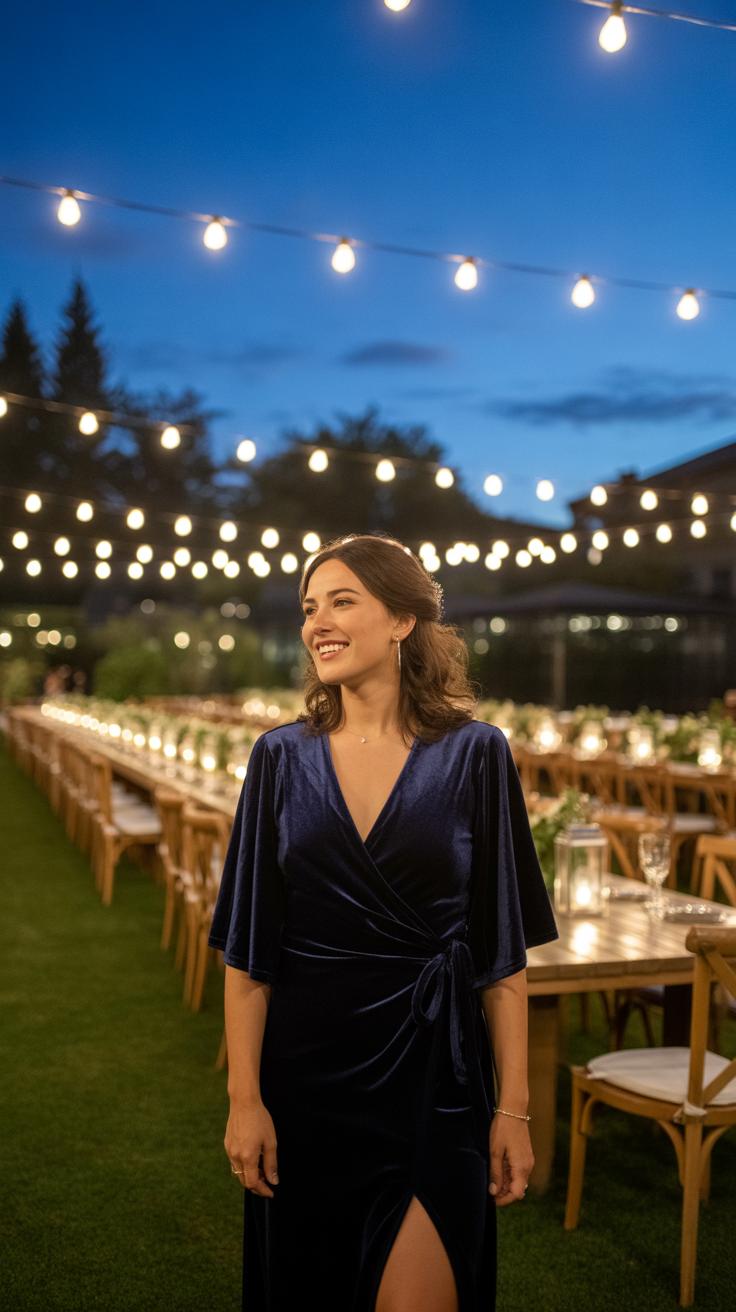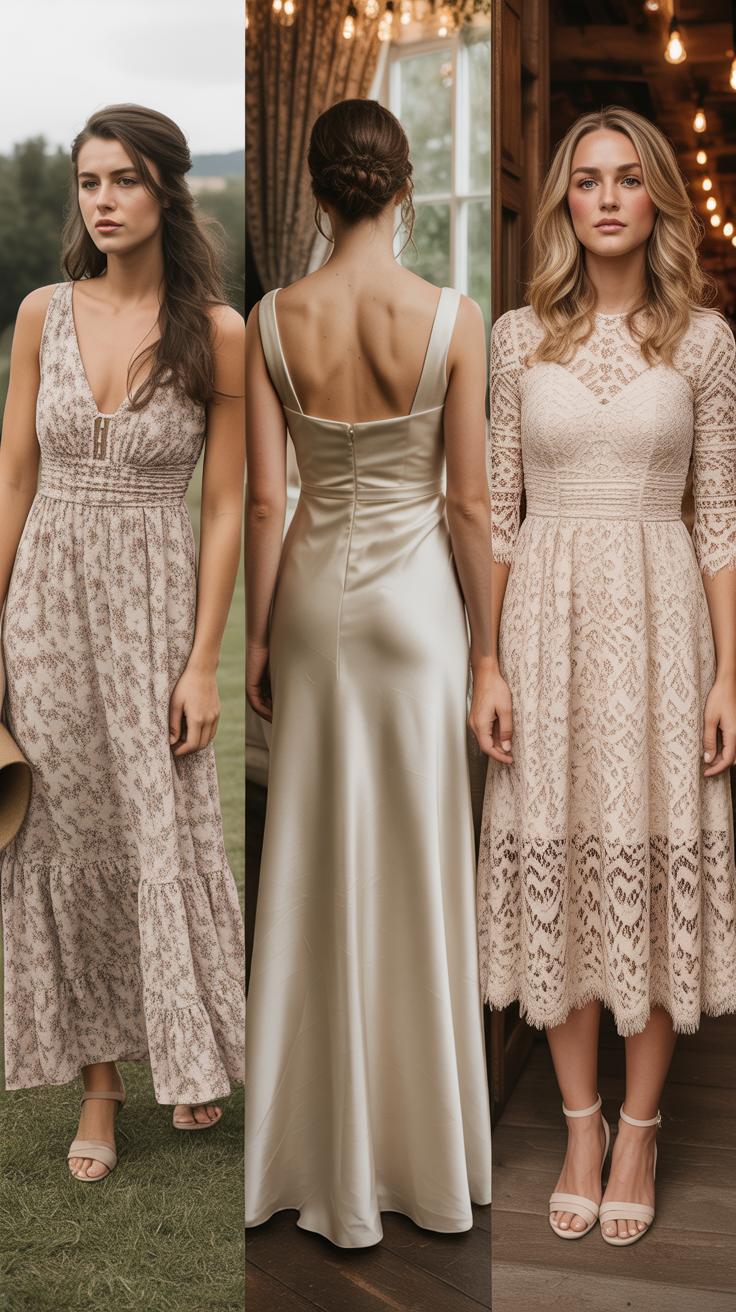Introduction
Wedding events are special occasions that celebrate the union of two people and their families. As a guest, your choice of outfit plays a key role in showing respect for the couple and the event. Wedding attire varies significantly depending on cultural background, theme, and dress code. It is necessary for guests to find an outfit that fits the occasion while allowing them to express their personal style.
The challenge lies in balancing style with respect. You want to look good but not distract from the couple or stand out inappropriately. Appropriate clothing signals your understanding of the social norms and traditions associated with weddings. In this article, you will find guidance on how to choose wedding guest outfits that align with etiquette, cultural expectations, and current fashion trends.
Understanding wedding dress codes
Wedding dress codes guide guests on how to dress with respect and style. The most common dress codes you will see are casual, semi-formal, formal, and black-tie. Each code sets different expectations for guest attire and can help you choose the right outfit.
Casual means comfort is key, but you should avoid everyday jeans or T-shirts. A nice sundress or tailored pants with a blouse usually work well here. Semi-formal raises the bar with options like cocktail dresses for women and dress pants with a blazer for men.
Formal outfits often mean long dresses or dressy suits. Black-tie is the most elegant. Women wear long gowns, and men wear tuxedos or dark suits with ties. Noticing the dress code helps you fit in while showing respect to the couple’s occasion.
Common wedding dress codes explained
A casual dress code lets you dress relaxed yet polished. Think simple dresses, skirts, or slacks with neat tops. Avoid anything too flashy or casual sportswear.
Semi-formal invites more dressy choices. Women can wear cocktail dresses or a nice jumpsuit, while men should consider dress slacks with a button-down shirt or blazer.
Formal calls for elegant attire. Women often wear floor-length gowns or stylish midi dresses. Men should wear dark suits with ties or bow ties.
Black-tie requires the highest level of formality. Women typically choose long gowns with refined accessories. Men wear tuxedos and polished shoes.
Reading invitations for dress code hints
Wedding invitations provide clues about dress codes. Look for phrases like “black-tie,” “formal,” or “casual” printed clearly. Words like “evening attire” or “cocktail attire” hint at semi-formal or formal dress.
Pay attention to the venue and time of day mentioned. A garden ceremony or afternoon wedding often suggests lighter, casual to semi-formal outfits. Evening events in upscale venues usually mean formal or black-tie dress.
Sometimes invitations use subtler language. Words like “festive,” “dressy casual,” or “celebration attire” require you to consider the setting and time before picking an outfit. When unsure, asking the host is a direct way to clarify.
Wedding Outfits For Guests Balancing Style And Respect
Cultural attire considerations
When attending weddings from different cultures, your outfit choice should respect traditions that may influence colors, styles, and garment types. In many Indian weddings, for example, guests often wear brightly colored sarees or kurta-pajamas. Wearing red as a guest might be discouraged since it is reserved for the bride. In Chinese weddings, red symbolizes luck and happiness, so guests often choose red or gold clothing. However, white is usually avoided because it represents mourning. African weddings might feature guests wearing traditional fabrics like kente cloth, which carries symbolic meanings depending on its patterns and colors. When you prepare for a multicultural wedding, consider asking the couple or other guests about appropriate attire beforehand. How might your outfit reflect the culture’s respect without drawing unwanted attention? Paying attention to these customs elevates your presence without overshadowing the couple.
Religious dress expectations
Different religions often expect guests to follow specific dress or modesty rules. For example, guests at Jewish weddings might be asked to cover their heads with yarmulkes or hats. At Sikh weddings, covering your head and removing shoes before entering the gurdwara is customary. Muslim weddings frequently require modest dresses that cover shoulders and knees, avoiding tight or revealing clothing. Christian ceremonies can vary, but dressing conservatively in the church is generally appreciated. Modesty might include long sleeves or avoiding low necklines. What do these religious expectations say about showing respect during sacred moments? When you meet these standards in your attire, you honor the couple’s faith while fitting seamlessly with the event’s tone. Asking for guidance when in doubt shows your willingness to respect their beliefs and traditions.
Selecting colors that honor the occasion
Choosing the right colors for a wedding outfit shows respect for the event and the couple. Some colors carry traditional meanings, like red symbolizing happiness in many Asian cultures or pastels reflecting softness in spring weddings. Understanding these meanings helps you pick colors that match the mood of the day.
You should also consider the bride and groom’s chosen colors. Avoid shades that might clash or overshadow their palette. For example, if the couple picked soft blush tones, loud neon colors may feel out of place. Checking the wedding invitation or any style guide can help you make a better choice.
Ask yourself: does your outfit color complement the setting and theme? Picking colors that fit the occasion helps you look stylish while honoring the couple’s vision. This balance is key to dressing well as a guest.
Colors to avoid at weddings
White is often off limits for guests in many Western weddings since it is traditionally worn by the bride. Wearing white can distract or compete for attention, which most guests want to avoid. It’s best to save white for beach weddings or occasions where the couple indicates it is acceptable.
Black also raises concerns. Some see black as too somber or linked to mourning. Yet, many modern weddings now accept black as elegant, especially for evening events. If unsure, you can add colorful accessories or choose softer fabrics to soften the look.
Some guests steer clear of red at certain cultural weddings, as it can be a dominant color reserved for the bride. Think about the customs before choosing strong, bright hues. Avoiding these colors helps keep focus where it belongs—on the happy couple.
Safe and stylish color options
Soft pinks, blues, lavender, and sage green suit many wedding styles. These colors look flattering in photos and blend well with common wedding palettes. Earth tones like beige, navy, and dusty rose also work well for both casual and formal weddings.
You can add personality with jewel tones such as emerald or sapphire when the event calls for rich color. Light prints and subtle patterns add interest without overwhelming the look.
Would you prefer a color that matches the season? Light pastels suit spring and summer, while deeper, warm colors hold up well for fall and winter weddings. Choosing hues that fit the time of year will make you look both stylish and appropriate.
Choosing the right outfit for the venue and season
When selecting your wedding guest outfit, the venue plays a big role in what you should wear. Outdoor events call for lightweight fabrics that allow air circulation, like cotton or linen. Indoor weddings offer more flexibility, so you can opt for richer fabrics like silk or chiffon. Beach weddings usually demand casual yet polished looks, often with breathable clothes and sandals. Church ceremonies tend to require modest attire, covering shoulders and avoiding overly short hemlines.
The season also guides your choices. Warm weather suits airy fabrics and sleeveless styles, while colder months need thicker materials and layering. Match your outfit’s style and fabric to both where and when the wedding happens to stay comfortable and respectful. Have you considered how your footwear will fare on grass, sand, or polished floors?
Matching outfits to the wedding venue
The venue influences more than just fabric. At the beach, you should pick shoes that won’t sink in sand, like wedges or stylish flats. High heels might be impractical. Accessories should be minimal to avoid feeling weighed down in hot sun. Lightweight scarves or delicate jewelry work well.
Church venues usually require closed-toe shoes and understated accessories. Avoid flashy items that distract from the ceremony. Fabrics that cover more skin show respect here, so long flowing dresses and suits with jackets are appropriate. Would your shoes handle a marble floor or a sandy shore better?
Dressing for weather and season
Fabric choice impacts your comfort through the event. For summer weddings, breathable materials such as linen, cotton, or light silk help keep you cool. Layer with a shawl or light cardigan if temperatures drop in the evening. In colder seasons, opt for wool blends or heavier silks. Adding a tailored jacket or elegant wrap keeps you warm without losing style.
Think about how long you’ll be outside or moving between venues. When rain or wind is possible, bring suitable outerwear that complements your outfit. Have you planned layers that look good but adjust to changing weather? This balance keeps you comfortable while staying polished throughout the celebration.
Balancing comfort with elegance
Weddings often last several hours, filled with ceremonies, photos, and dancing. Choosing an outfit that feels comfortable throughout the day helps you enjoy every moment. How can you stay stylish while avoiding clothes that restrict your movement or cause discomfort? Prioritize outfits that let you sit, stand, and move easily.
Consider the balance between a polished look and practical wear. Wearing tight or heavy fabrics might look good but can become tiring fast. Including subtle stretchy details or looser cuts can maintain a refined vibe without making you feel trapped. Remember, feeling good in your clothes often translates to looking confident and elegant.
Comfort is key
Choosing the right fabric affects your comfort more than you might expect. Natural fibers like cotton, linen, silk, and lightweight wool breathe better and reduce sweating. These materials adapt to temperature changes during outdoor or indoor events.
Shoe choices can make or break your experience. Opt for shoes with cushioned soles and stable heels instead of high, narrow ones. If heels are a must, consider block heels or wedges that give support and allow balance. Avoid new shoes that haven’t been broken in to prevent blisters and pain.
Elegant yet comfortable outfit combinations
Dresses with A-line or wrap designs allow ease of movement and are suitable for many wedding styles. Wide-leg pants paired with a stylish blouse offer a modern, elegant look without restricting your steps. Lightweight jumpsuits made from breathable fabrics combine sophistication and comfort perfectly.
Layering with a soft blazer or shawl can add structure and warmth without bulkiness. If you prefer skirts, pick midi lengths to avoid catching on chairs or your shoes, while giving you room to move freely. When was the last time you paused to think about how your outfit supports your comfort at a long event?
Accessorizing Wisely for Wedding Events
Choosing the right accessories plays a big role in how your wedding outfit looks. Jewelry, bags, hats, and shoes should enhance your outfit without overpowering it. Avoid piling on too many pieces that compete for attention. Instead, pick a few items that work well together to create a balanced look.
Think about the size and shine of your jewelry. Big, flashy earrings or necklaces can steal focus from the couple. A simple pair of studs or a delicate bracelet can add just enough sparkle. When it comes to bags, a small clutch usually fits well, keeping your hands free and your appearance neat.
Footwear also matters. Choose shoes that match both your outfit and the event’s formality. If you expect much standing or dancing, find a pair that feels comfortable. Hats can be charming, but make sure they don’t block others’ views or look too casual. How will your accessories support the respect and style this day deserves?
Choosing Subtle and Suitable Accessories
Think about the message your accessories send before you put them on. Oversized or colorful pieces might distract other guests or the couple. Your focus should be on fitting into the celebration, not outshining it. Simple designs with neutral tones often work best.
A pair of classic pearl earrings or a thin gold necklace adds polish without drawing too much attention. Avoid noisy bangles or very large rings. If using a hat, pick one that is elegant and not too tall or wide.
Do you feel your accessories help you blend stylishly into the event? Small touches matter when showing respect through what you wear.
How to Coordinate Accessories with Your Outfit
Matching your accessories with your dress or suit can complete your look smoothly. Use colors that complement or subtly match your outfit’s shade. For example, if your dress is navy, silver or pearl jewelry pairs nicely.
Consider the style too. A modern dress suits minimalist accessories, while a vintage look may call for retro-inspired pieces. Avoid mixing too many themes that clash.
Your bag and shoes should also echo your outfit’s tone and color. A neutral clutch with colorful shoes can work, but avoid clashing bold color combos.
Take a moment to try your complete look. Do your accessories add harmony or create conflict? Your goal is to look polished and respectful without drawing the eye away from the wedding itself.
Avoiding common outfit mistakes
Choosing the right outfit for a wedding means knowing what to avoid as much as what to wear. One mistake guests often make is wearing white, which can take focus away from the bride. Stick to colors that complement the event without blending into the bridal party.
Overly casual clothing also stands out in a negative way. Jeans, sneakers, or T-shirts rarely suit formal weddings. Check the invitation for hints about the event’s formality to guide your choice.
Wearing something that clashes with the tone of the wedding causes discomfort. For example, a flashy or loud outfit might feel out of place at a simple, intimate ceremony. Understanding the venue and time of day helps you dress suitably and respectfully.
Think about how your outfit fits the style of the wedding. Ask yourself: Will my clothes make the day about me, or will they honor the couple’s special moment?
Common pitfalls to steer clear of
Wearing inappropriate colors ranks high on the list of guest mistakes. Bright red or black might not fit the couple’s preferences or wedding theme. Consulting invitations or hosts, if possible, helps avoid unwanted surprises.
Clothes that reveal too much skin are another frequent error. Avoid dresses or tops that are too short, low-cut, or sheer. Modesty shows respect for both the event and other guests.
Ignoring dress codes causes confusion for everyone. If the invite asks for cocktail attire or black tie, follow it. Dressing too casually breaks unspoken etiquette and may cause you to feel uncomfortable among more formally dressed guests.
Tips to double-check your outfit choice
Before the event, review your outfit with a checklist:
- Is the color appropriate? Avoid white and overly bright or dark shades.
- Does the outfit fit the dress code? Formal, semi-formal, casual?
- Is the style modest enough for the setting?
- Are the shoes comfortable and suitable for the venue?
- Does the outfit coordinate with the time of day and season?
- Will your look blend well with the event’s tone?
When in doubt, ask a trusted friend for their opinion or check online examples matching the wedding type. This step helps avoid last-minute surprises and lets you enjoy the celebration with confidence.
Adapting trends to wedding attire
Your aim is to blend current fashion trends with a respectful look suitable for weddings. Choose trends that enhance your outfit without overpowering the occasion. For example, soft pastel colors or nature-inspired shades work well and remain elegant. You can try layering light, breathable fabrics like chiffon or silk blends to stay stylish and comfortable.
Consider silhouettes that flatter your figure and fit the formality of the ceremony. Flowy dresses, tailored jumpsuits, or sleek midi skirts often hit the right balance. Small details like subtle ruffles or delicate embellishments add a trendy touch without going overboard. Think about adding a trend-driven accessory, such as a statement belt or vintage-inspired earrings, to keep your outfit fresh.
Ask yourself if your outfit respects the wedding’s tone and venue. Would the trend you want to wear distract attention from the couple? If it does, rethink the choice. Blending trends with classic elegance helps you dress fashionably yet appropriately for the celebration.
Trends that work well for weddings
Look for colors like dusty rose, sage green, or soft lilac. These shades suit most wedding themes and feel modern without being loud. Neutral tones like beige or soft gray also work well and let you accessorize freely.
Silhouettes such as A-line dresses and wrap styles remain popular and wedding-friendly. They flatter many body types and fit both semi-formal and formal weddings. Lightweight fabrics like satin, crepe, or lace give your outfit texture and a dressy look.
Keeping some classic elements, like a structured blazer or a well-cut dress, ensures your look won’t feel out of place. Shoes in block heels or elegant flats keep you comfortable while adding style. Which trends fit your style and the wedding atmosphere you are attending?
When to avoid trendy extremes
Steer clear of fashions that scream casual, such as ripped denim, sweatshirts, or graphic tees. These choices don’t align with the typically polished atmosphere of weddings. Avoid overly bright or neon colors that could overshadow the couple or clash with the setting.
Ultra-short hemlines, plunging necklines, or sheer fabrics may be inappropriate for many ceremonies and can make others uncomfortable. Oversized logos or distracting patterns can also pull focus away from the event.
Can your outfit show respect for the event while staying stylish? Avoid extremes that risk making you look underdressed or disrespectful. It is better to lean toward timeless choices combined with subtle trends instead of chasing every new fad.
Special considerations for evening weddings
Evening weddings usually call for a more formal dress code than daytime events. You’ll notice that darker colors and elegant fabrics are more common, reflecting the event’s sophisticated tone. Unlike casual daytime weddings, evening celebrations often mean guests should avoid light or overly bright outfits to fit the setting.
Think about the venue and time when choosing your outfit. For example, a black-tie evening wedding often requires gowns or suits that look polished and refined. Meanwhile, a less formal evening event might allow you to add a touch of sparkle or interesting textures.
Balancing style with respect means choosing clothes that celebrate the occasion without overshadowing the bride and groom. Ask yourself: Does my outfit match the formality of the invitation? Does it help me join in the celebration while showing respect for the couple’s wishes? These questions guide you toward the right choice for an evening wedding.
Elevating your evening wedding outfit
For evening weddings, select darker shades like navy, emerald, or deep burgundy instead of pastels or bright colors. Fabrics such as velvet, silk, or satin bring a richer feel that matches the night’s formality.
Accessories can shift your look toward elegance. Try a classic clutch, subtle jewelry, or cufflinks for men. A sleek pair of heels or polished dress shoes completes the picture. This approach respects the event’s tone while letting you express your personal style.
Focus on fit and finish. A well-tailored dress or suit sends a message of care and consideration. Have you ever noticed how small details in your outfit can change the entire impression you give?
Adjusting your look for after-dark celebrations
Evening and nighttime wedding events may run late and bring cooler temperatures. Layer your outfit with a stylish wrap, shawl, or a fitted blazer to stay comfortable without losing flair.
Choose makeup that stays put and enhances your features under dim lighting. A bold lip or defined eyes can add impact, but keep it balanced to avoid overwhelming your look.
Footwear should combine style and comfort since you might spend hours standing or dancing. Consider cushioned soles or bring a backup pair you can switch to later in the night.
What choices will help you enjoy the celebration while feeling confident and comfortable as the night goes on?
Dressing for Diverse Wedding Themes
Identifying wedding themes from invites
Wedding invitations often hint at the event’s style. A formal black-tie wedding might use elegant fonts and deep colors like black or navy on the invite. A rustic wedding invite might feature floral patterns, kraft paper, or casual wording. Vintage weddings might include classic or old-fashioned designs, such as lace details or sepia tones.
Look for keywords like “casual,” “semi-formal,” or “formal” in the invitation text. Couples sometimes mention dress codes or themes directly, which gives you a clear idea of what’s expected. Even the venue can offer clues—a barn points toward rustic, while a ballroom suggests a more formal setting.
Matching your outfit to the wedding theme
When you understand the theme, you can choose clothes that fit well and show respect. For a rustic wedding, opt for earth tones and comfortable fabrics. Women might wear a simple midi dress with floral prints, while men can go for chinos and a button-up shirt without a tie.
At black-tie weddings, wear a floor-length gown or a sharp tuxedo. Vintage weddings let you experiment with retro styles, like tea-length dresses or tailored suits with suspenders. Casual weddings call for neat, relaxed clothing—think summer dresses or dress shirts with slacks.
Does your outfit complement the setting? Does it honor the couple’s style? Adjusting to the theme helps you celebrate without standing out in the wrong way. What choices will signal you understand and appreciate the event’s vibe?
Conclusions
The right wedding guest outfit combines thoughtful consideration of the event’s dress code with your personal fashion sense. Being mindful of cultural customs and the couple’s wishes helps you avoid outfit mistakes. Comfort also matters, as weddings often involve long hours and multiple activities. When you dress appropriately, you enhance the celebratory mood and show genuine respect for the occasion.
By following practical tips on color, style, and formality, you can balance style and respect in your wedding guest attire. Reflect on the wedding details and ask yourself if your outfit honors the couple and the event. This mindset leads to confident choices and a positive contribution to the celebration. With the right outfit, you not only look good but also honor the joyful occasion meaningfully.


